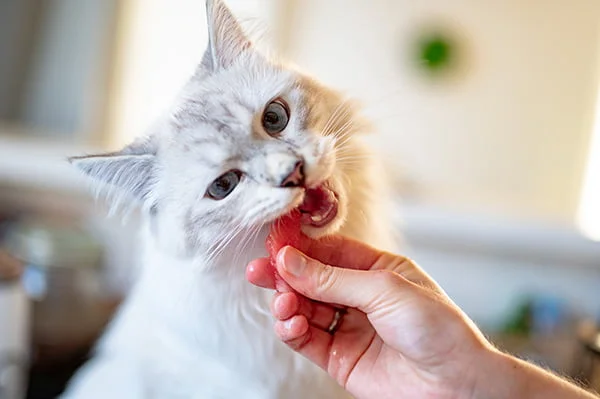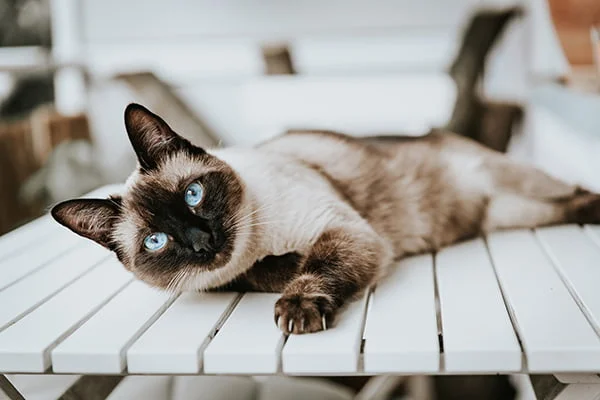Cats are undoubtedly some of the most interesting creatures on the planet, with their playful personalities, curious behavior, and mesmerizing eyes. As cat owners, we often wonder when our furry friends stop growing and reach their full size. While cats are generally considered fully grown by the time they reach one year old, the answer to this question is more complex. Depending on various factors such as breed, nutrition, and gender, cats can continue growing and developing well into their second year. In this article, we'll explore the factors influencing a cat's growth and help you determine when your feline friend has reached full size.
When Do Cats Stop Growing
As cat parents, you may wonder when your kitten will reach their full size. When do cats stop growing? While it's generally believed that cats reach their full size at around 12 months of age, this isn't always the case. Not all cats are done growing at this age.
Factors such as breed, gender, and nutrition all affect how long a cat will continue to grow. The largest cat breed, such as Maine Coons can take up to four years to reach their adult size. As a cat parent, it's important to understand the factors that can influence your cat's growth and development, so you can help them grow into healthy and happy adult cats.
Factors that determine the size of your kitty
Genetic
Genetics is one of the biggest factors determining your kitty's size. Different breeds of cats have different genetic traits that can affect their size, weight, and overall physical appearance.
Some cat breeds, such as the Maine Coon and the Savannah, are known for their large size, while others, like the Singapura and the Munchkin, tend to be smaller in stature. However, it's not just a cat's breed that matters - even within a single breed, individual cats can vary in size due to genetic factors.
Gender
Gender can also play a role in determining the size of your kitty. Generally, a male cat tends to be a little larger and heavier than a female of the same breed, and this is due to the differences in hormones and growth patterns between male and female cats.
Typically, male cats tend to be larger and heavier than females, and this is because males are typically more muscular and have a larger bone structure. On the other hand, female cats are generally more petite and have a smaller bone structure, making them appear more delicate.

Source: Unsplash
Nutrition
The food and nutrition your cat receives can also impact their growth and size. A well-balanced diet with adequate protein, fat, vitamins, and minerals is essential for a cat's growth and development. On average, most kittens gain about a pound per month. Once the cat is around ten to twelve months of age, the kitten can transition to adult cat food. However, larger breeds of kittens who are struggling to keep weight on should remain on kitten food for a year or longer.
Health
Health is another important factor affecting a cat's growth and size. Illnesses or medical conditions that impact a cat's growth hormones or metabolism can cause them to be smaller or larger than average.
Exercise
Regular exercise during a kitten's formative years can profoundly impact its growth and overall health.
Physical activity helps kittens build strong muscles and bones and supports healthy weight management, which is crucial for preventing obesity-related health issues later in life. Plus, exercise can help your kitten develop good habits that will serve them well into adulthood.
So break out the toys and encourage your kitten to play and explore - their future size and well-being depend on it!
Neutering/Spaying
Neutering or spaying your cat can also impact its size. These procedures can alter hormone levels and metabolism, affecting a cat's growth and weight.
Age
Another aspect that can impact a cat's size is their age. Cats generally reach their full size by the time they are 1-2 years old, depending on the breed. However, senior cats may experience changes in weight and size due to age-related health issues.
Number of Siblings
The number of siblings a cat has can impact its growth and size! Research has shown that kittens who are part of larger litters tend to be smaller in size compared to those from smaller litters. This is because there are more siblings to compete for milk available from the mother cat, which can result in each kitten receiving a smaller share of the nutrients they need for optimal growth.

Source: Unsplash
Common cat breeds, and when they stop growing
Siamese: Siamese cats usually reach their full size by the time they are 12 months old.
Persian: Persians take longer to reach their full size and can continue growing until they are 18-24 months old.
Maine Coon: Maine Coon cats are one of the largest cat breeds and can take up to four years to reach their full size.
Bengal: Bengals generally reach their full size by the time they are 12-16 months old.
Sphynx: Sphynx cats are a relatively small breed and usually reach their full size by the time they are 12-16 months old.
Scottish Fold: Scottish Folds usually reach their full size by the time they are 12-18 months old.
Ragdoll: Ragdolls are a large breed and can continue growing until they are 3-4 years old.
British Shorthair: British Shorthairs usually reach their full size by the time they are 12-18 months old.
FAQ
When do cats reach adulthood?
Generally speaking, cats reach adulthood at around one year old. At this point, they've reached their full size and weight, and their personalities have fully developed. While cats may technically be considered adults at one year old, their behavior and habits can continue to evolve well into their senior years. Just like humans, cats continue to learn and grow throughout their lives.
What is the growth difference between male and female cats?
For the average cat, the first six months of a kitten's life undergo the most pronounced growth period, but the pace of growth can differ marginally between male and female cats. According to a study, male cats stop growing later in life and may actually experience a faster growth rate during their adolescent years. Conversely, female cats may attain their adult weight earlier than males.
